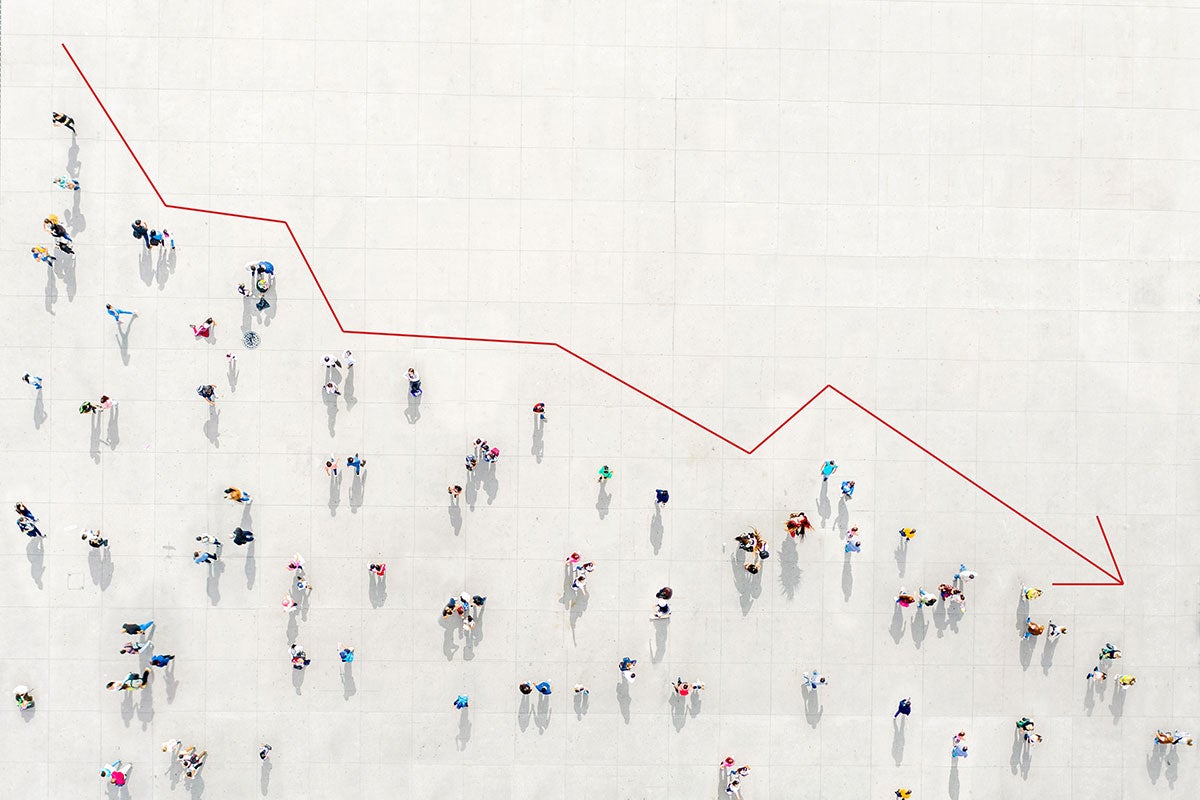COVID-19 infection rates may be peaking in Orange County later this month and trending down toward December, according to new projections by data scientists at the University of Central Florida.
The researchers from the Departments of Statistics and Data Science and Computer Science caution, however, that their projections — built using the latest artificial intelligence and deep-learning models — don’t account for variables like the NBA relocating to Orlando, schools reopening in August or tourists visiting Orange County.
“The current predictions are based on the data to date, and the future may change,” says Shunpu Zhang, professor and chair of the Department of Statistics and Data Science, who worked on the project along with Associate Professor of Computer Science Liqiang Wang and graduate student Dongdong Wang.
The trio developed the projections by feeding data from Johns Hopkins University and The New York Times into 10 different compartmental models informed by 10 deep neural networks. Each deep neural network was trained with about 50,000 simulations from classic epidemic mechanistic models, including SIR and SEIR, both widely accepted by epidemiologists. The resulting models include the variables to help policy makers see the best-case and worst-case scenarios.
Based on the observation data available through July 22, those scenarios include:
- The daily increase of COVID-19 positive cases will begin to slow around early August for the U.S. and the end of July for Orange County.
- The maximum infection rate is expected to be approximately 12 million for the U.S., 1.6 million for Florida and 70,000 for Orange County.
- The number of ICU beds occupied by COVID-19 patients will peak in early August for the U.S. and Florida, end of July in Orange County.
- There is a strong correlation between Florida and the U.S., indicating the state plays a prominent role in informing national policy. Similarly, Orange County tracks Florida’s numbers.
- The researchers also explored a hypothetical situation that extended Florida’s shutdown, instead of opening up into Phase 2 in early June. Charts show a dramatic rise in positive cases almost immediately after reopening began and the numbers tell the same story.
- The projected ultimate total infection rate tripled in the U.S. from 4 million to 12 million; expanded 16 times in Florida, from 100,000 to 1.6 million; and jumped 35 times in Orange County, from 2,000 to 70,000.
- More detailed and latest results can be found at Department of Computer Science and Department of Statistics and Data Science.
Charting COVID-19’s rise and fall took an innovative modeling approach. The novelty of the virus and its corresponding limited data would typically call for a physics-based analysis, Zhang says. The challenge of this approach is its dependence on accurate calibration.
“However, this computational difficulty can be easily resolved by deep learning,” Wang says.
Following guidance from Zhang and Wang, Dongdong Wang developed an approach by blending compartmental model and deep learning to more efficiently and accurately fit observed data and generate more reliable infection trajectory.
“Our method is flexible, and could be generalized into a variety of combinations,” said Zhang.
UCF launched an Artificial Intelligence and Big Data Initiative in June to position the university as a preeminent leader in the data science industry. The 23-member panel’s recommendations will form a roadmap toward that goal.




